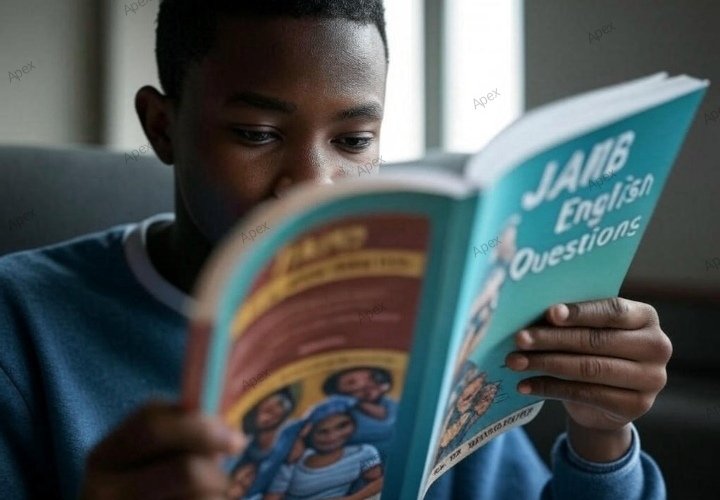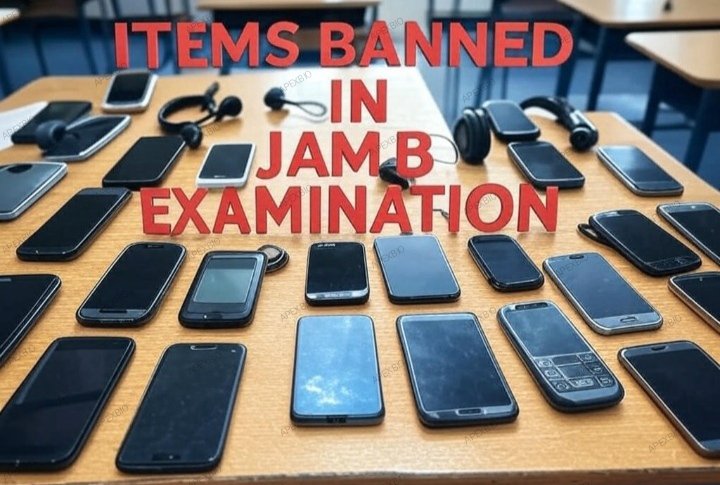In Nigerian secondary schools, physics is taught as a foundational topic, mostly to students in the science stream. In-depth discussions of mechanics, electricity, thermodynamics, and optics are included as it explores matter, energy, and their interconnections. For students who want to take university courses in computer science, engineering, physics, or astronomy, this topic is essential. Because it offers the fundamental concepts needed for various professions, it also plays a big part in national exams like WAEC, NECO, and JAMB. Jamb Physics Past Questions.
Since JAMB often reiterates important ideas and difficulties every year, it is very helpful for JAMB applicants studying physics to concentrate on previous questions. To do well on the tests and lay a solid foundation for future academic or professional pursuits in science and technology, you must master these subjects. Answers have been supplied to help you prepare and improve the effectiveness and efficiency of your study sessions.
JOIN US ON THESE SOCIAL MEDIA PLATFORMS
Twitter@apexbio24
Jamb Physics Past Questions
SECTION A
1. The rate of change of velocity is called
(a) Speed
(b) Acceleration
(c) Momentum
(d) Displacement
The correct answer is: (b) Acceleration
2. The SI unit of force is
(a) Joule
(b) Newton
(c) Pascal
(d) Watt
The correct answer is: (b) Newton
3. The law that states that energy cannot be created or destroyed is
(a) Newton’s First Law
(b) Ohm’s Law
(c) Law of Conservation of Energy
(d) Hooke’s Law
The correct answer is: (c) Law of Conservation of Energy
4. The force that opposes motion between two surfaces in contact is called
(a) Tension
(b) Friction
(c) Gravity
(d) Centripetal force
The correct answer is: (b) Friction
5. The distance covered per unit time is called
(a) Velocity
(b) Speed
(c) Acceleration
(d) Momentum
The correct answer is: (b) Speed
6. A body in motion remains in motion unless acted upon by an external force. This is Newton’s
(a) First Law
(b) Second Law
(c) Third Law
(d) Law of Gravitation
The correct answer is: (a) First Law
7. The unit of electric current is
(a) Volt
(b) Coulomb
(c) Ampere
(d) Ohm
The correct answer is: (c) Ampere
8. The energy possessed by a body due to its motion is called
(a) Potential energy
(b) Kinetic energy
(c) Mechanical energy
(d) Thermal energy
The correct answer is: (b) Kinetic energy
9. The speed of light in a vacuum is approximately
(a) 3 × 10⁸ m/s
(b) 3 × 10⁶ m/s
(c) 3 × 10⁴ m/s
(d) 3 × 10² m/s
The correct answer is: (a) 3 × 10⁸ m/s
10. The device used to measure current is
(a) Voltmeter
(b) Ammeter
(c) Galvanometer
(d) Ohmmeter
The correct answer is: (b) Ammeter
SECTION B
11. The force of attraction between two bodies is called
(a) Magnetic force
(b) Gravitational force
(c) Electric force
(d) Frictional force
The correct answer is: (b) Gravitational force
12. The instrument used to measure atmospheric pressure is
(a) Thermometer
(b) Barometer
(c) Hydrometer
(d) Sphygmomanometer
The correct answer is: (b) Barometer
13. The unit of frequency is
(a) Joule
(b) Watt
(c) Hertz
(d) Newton
The correct answer is: (c) Hertz
14. The force acting on a body due to gravity is called
(a) Friction
(b) Weight
(c) Tension
(d) Mass
The correct answer is: (b) Weight
15. Which of these is a scalar quantity?
(a) Velocity
(b) Force
(c) Speed
(d) Displacement
The correct answer is: (c) Speed
16. The energy stored in a stretched spring is called
(a) Kinetic energy
(b) Elastic potential energy
(c) Thermal energy
(d) Mechanical energy
The correct answer is: (b) Elastic potential energy
17. The upward force experienced by an object immersed in a fluid is called
(a) Gravitational force
(b) Buoyant force
(c) Magnetic force
(d) Centripetal force
The correct answer is: (b) Buoyant force
18. Heat transfer by direct contact of particles is called
(a) Radiation
(b) Convection
(c) Conduction
(d) Diffusion
The correct answer is: (c) Conduction
19. The resistance of a conductor depends on its
(a) Length and cross-sectional area
(b) Density and volume
(c) Mass and weight
(d) Temperature and color
The correct answer is: (a) Length and cross-sectional area
20. The SI unit of power is
(a) Joule
(b) Watt
(c) Newton
(d) Pascal
The correct answer is: (b) Watt
SECTION C
21. The bending of light as it passes from one medium to another is called
(a) Reflection
(b) Refraction
(c) Diffraction
(d) Dispersion
The correct answer is: (b) Refraction
22. The property of a wave that determines its loudness is
(a) Amplitude
(b) Frequency
(c) Wavelength
(d) Speed
The correct answer is: (a) Amplitude
23. The change in momentum of a body is equal to the
(a) Force applied
(b) Impulse
(c) Energy transferred
(d) Acceleration
The correct answer is: (b) Impulse
25. The principle that states that pressure applied to a fluid is transmitted equally in all directions is ?
(a) Archimedes’ Principle
(b) Pascal’s Principle
(c) Bernoulli’s Principle
(d) Hooke’s Law
The correct answer is: (b) Pascal’s Principle
26. A transformer is used to ?
>>>>>>>>>>>>>>>>>>>>>>>>>>>>>(a) Convert AC to DC
(b) Increase or decrease voltage
(c) Measure electric current
(d) Store electrical energy
The correct answer is: (b) Increase or decrease voltage
27. The motion of a pendulum is an example of ?
(a) Rotational motion
(b) Linear motion
(c) Oscillatory motion
(d) Random motion
The correct answer is: (c) Oscillatory motion
28. The escape velocity of an object depends on ?
>>>>>>>>(a) Mass of the object
(b) Mass and radius of the planet
(c) Distance of the object from the planet
(d) Gravitational constant only
The correct answer is: (b) Mass and radius of the planet
29. The splitting of white light into its component colors is called ?
(a) Dispersion
(b) Diffraction
(c) Reflection
(d) Refraction
The correct answer is: (a) Dispersion
30. The energy required to remove an electron from an atom is called ?
(a) Electron affinity
(b) Ionization energy
(c) Electronegativity
(d) Work function
The correct answer is: (b) Ionization energy
SECTION D
31. The phenomenon of light bouncing off a surface is called ?
(a) Refraction
(b) Reflection
(c) Dispersion
(d) Diffraction
The correct answer is: (b) Reflection
32. The ability of a material to return to its original shape after deformation is called ?
(a) Plasticity
(b) Elasticity
(c) Rigidity
(d) Malleability
The correct answer is: (b) Elasticity
33. The first law of thermodynamics deals with the conservation of ?
(a) Momentum
(b) Energy
(c) Mass
(d) Temperature
The correct answer is: (b) Energy
34. The device used to measure potential difference is ?
(a) Ammeter
(b) Voltmeter
(c) Ohmmeter
(d) Galvanometer
The correct answer is: (b) Voltmeter
35. In a parallel circuit, the total resistance is ?
>>>>>>>>(a) Equal to the sum of individual resistances
(b) Less than the smallest resistance
(c) Greater than the largest resistance
(d) Equal to the average of resistances
The correct answer is: (b) Less than the smallest resistance
36. The type of lens that converges light rays is ?
(a) Concave lens
(b) Convex lens
(c) Diverging lens
(d) Cylindrical lens
The correct answer is: (b) Convex lens
37. The device used to convert mechanical energy into electrical energy is ?
(a) Transformer
(b) Generator
(c) Motor
(d) Battery
The correct answer is: (b) Generator
38. The temperature at which a liquid changes to gas is called ?
(a) Freezing point
(b) Boiling point
(c) Melting point
(d) Sublimation point
The correct answer is: (b) Boiling point
39. Sound cannot travel through ?
(a) Solids
(b) Liquids
(c) Gases
(d) Vacuum
The correct answer is: (d) Vacuum
40. The acceleration due to gravity on Earth is approximately ?
(a) 8.8 m/s²
(b) 9.8 m/s²
(c) 10.8 m/s²
(d) 11.8 m/s²
The correct answer is: (b) 9.8 m/s²






